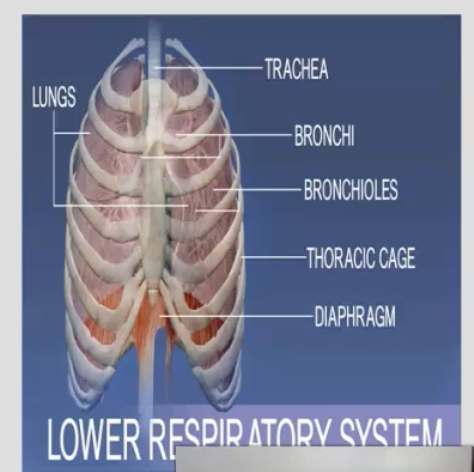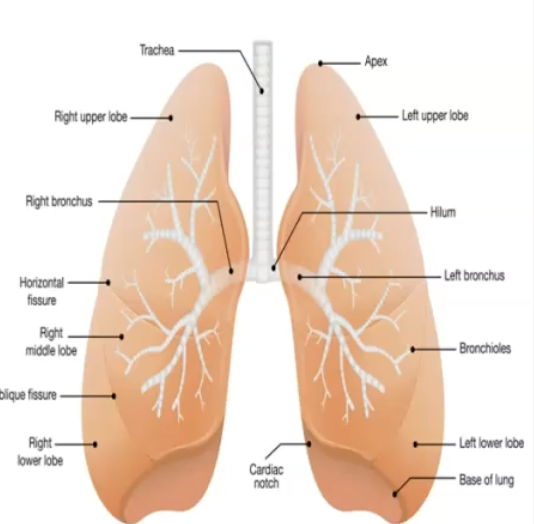Respiratory System
1/22
There's no tags or description
Looks like no tags are added yet.
Name | Mastery | Learn | Test | Matching | Spaced |
|---|
No study sessions yet.
23 Terms
What are the functions of the respiratory system?
supply oxygen
eliminate carbon dioxide
allow air to reach lungs
exchange gas
purify, humidify, and warm incoming air
What are the two main components of the respiratory system?
upper respiratory tract and lower respiratory tract
upper respiratory tract
organs in this tract are located outside of the chest cavity and include the nose, larynx, and pharynx
lower respiratory tract
organs of this tract are located inside of the chest cavity and include the trachea, lungs, and all segments of the bronchial tree

both food and air pass through this before reaching their destinations
pharynx
trachea
located below the larynx and is the main airway to the lungs
What are the bronchi?
two structures that branch from the trachea into each lung
diaphragm
the main respiratory muscle that contracts and relaxes to allow air into the lungs
What makes up the lung’s anatomy?
apex, base, division, bronchioles, and alveoli

apex
the narrow, superior portion of each lung just below the clavicle
base
the broad lung area that rests on the diaphragm
division
each lung is divided into lobes by fissures; the left lung has two lobes and the right has three
alveoli
microscopic balloon-shaped structures located at the end of the respiratory tree
pleural fluid
a slippery serous secretion that allows the lungs to glide easily over the thorax wall during breathing movements and causes the two pleural layers to cling together
pleura
a thin membrane that surrounds the lungs and lines the chest cavity
What is included in the respiratory zone?
includes respiratory bronchioles, alveolar ducts, alveolar sacs, and alveoli
What is external respiration?
gas exchange between the pulmonary blood and alveoli
What is respiratory gas transport?
when oxygen and carbon dioxide is transported to and from the lungs and tissue cells via the bloodstream
What is internal respiration?
when gas exchanges are made between blood and tissue cells in capillaries
tidal volume
normal quiet breathing; moves approx. 500 mL of air into and out of the lungs with each breath
inspiratory reserve volume
the amount of air that can be forcibly taken in on top of the tidal volume, normally between 2100 mL and 3200 mL
expiratory reserve volume
the amount of air that can be forcibly exhaled after a tidal expiration, approx. 1200 mL
residual volume
even after strenuous expiration about 1200 mL of air remain in the lungs and cannot be voluntarily expelled